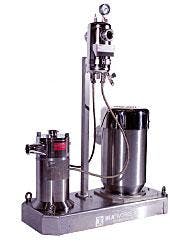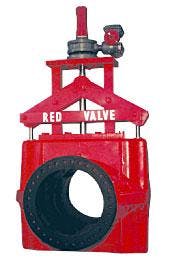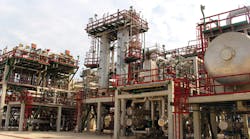Here's the ULTRA TURRAX UTL 2000 single stage dispersing machine that offers the refining and petrochemical segments of the industry a high degree of flexibility and scalability.
A variety of generators from coarse to superfine makes the unit adaptable to the user's specific needs. Options are also available on the motor, base, and materials of construction.
The unit is suited for mixing emulsions and suspensions requiring a coarse to medium particle size with a narrow distribution.
Possible applications include the production of fuels, oils, adhesives, lubricants, waxes, and stabilizers. Other uses include polymerization, microencapsulation, viscosity control, neutralization, and pH adjustment.
The company says scalability is assured by the rotor/stator design, which maintains a constant tip speed in all sizes, from pilot to full production.
The dispersing unit is available in seven inlet/outlet sizes, extending from 1 in./0.75 in. to 8 in./6 in., with motors ranging from 2 to 150 hp. Units are also self-draining.
Source: IKA Works Inc., 2635 Northchase Pkwy. SE, Wilmington, NC 28405.
New hydrate inhibitor
A new hydrate inhibitor in the HI-M-PACT inhibitor product line is based on third-generation antiagglomerant technology.
The new inhibitor technology is designed to reduce the cost of hydrate control in deepwater wells, flowlines, and facilities by replacing high volume methanol treatments.
HI-M-PACT hydrate inhibitor treatments are designed to be effective at significantly lower dose rates than those used in methanol programs, the company says. The firm points out that lower dose rates help result in improved logistics, reduced operating costs, smaller facilities, and reduced capital cost, as well as the elimination of crude oil penalties for methanol contamination.
Hydrate inhibitors are also designed to contribute to a safer working environment by replacing toxic and flammable methanol.
Source: Baker Petrolite Div., Baker Hughes Inc., 3900 Essex Lane, Suite 500, Houston, TX 75027-5177.
New thin, flexible insulation
New thin, flexible insulation is available for oil field uses.
Flexible blankets shown here, made of aerogels, provide low thermal conductivities. Because of the low thermal conductivity, the same U Values in pipeline applications can be obtained with 50-75% less insulation compared with typically used materials, the company says.
For example, with pipe in pipe construction, the use of aerogels enables a reduction in the volume of insulation needed between the inner and outer pipe, allowing the outer pipe to be reduced by at least one standard pipe size, the firm notes.
The material also is suited for deepwater projects, the company points out.
Use of aerogels does not require the use of vacuum to deliver its high insulating capacity.
Source: Aspen Aerogels Inc., 184 Cedar Hill St., Marlborough, MA 01752.
New control pinch valve
The Series 5400 control pinch valve features center line closure, true feedback positioning, and repeatable variable venturi flow control.
The elastomer sleeve isolates the valve body from the process, is abrasion resistant, and provides a full-port opening with no cavities to trap solids or debris. The easy to replace sleeve closes in a smooth, venturi pattern that allows for throttling control over time.
The 5400 features a 20:1 turndown ratio and a zero head loss effect. True feedback positioning is achieved through the direct linkage of the pneumatic positioner to the valve stem shaft. Size range available is 4-54 in.
Source: Red Valve Co. Inc., 700 N. Bell Ave., Carnegie, PA 15106.




